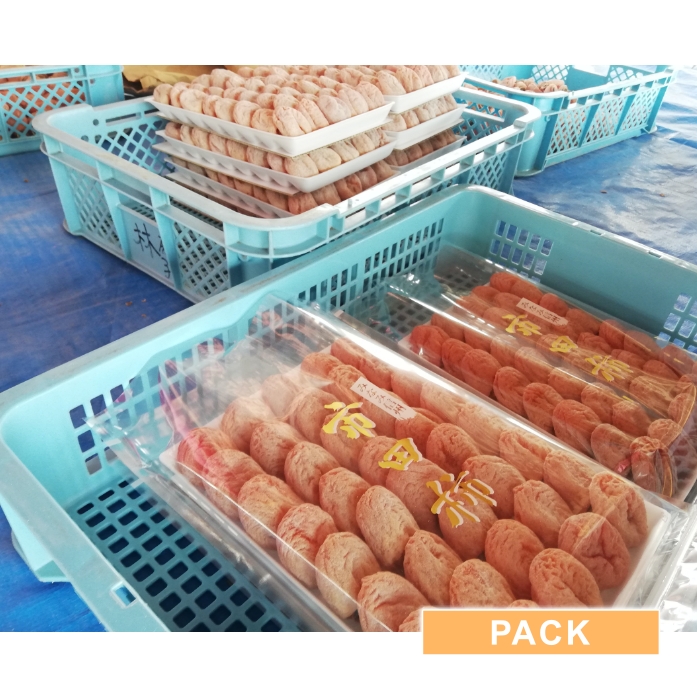Takamori's specialty: Ichidagaki
Ichidagaki, or dried persimmon, is the main specialty of Takamori.
In late October to early November, the persimmon farmers start the process of making Ichidagaki, and you can see persimmons hanging all over the town, not only in farms but also at people's balconies as people like to make some by themselves.
However, making dried persimmons is not as simple as it seems. To achieve these delicious, beautifully orange, high-end sweets, the first thing one needs is an adequate climate: cold, dry and sunny. This is why dried persimmons are a rare treat even in Japan. Other prefectures also make dried persimmons, but because the climate is not exactly the same, the persimmons turn brown rather than orange when drying, and the taste is also a little bit different.
This is why Ichidagaki refers to dried persimmons produced in the South of Nagano prefecture exclusively (the general term for dried persimmons is Hoshigaki).
This difference has been noted by Japan, and Ichidagaki have the Japanese Geographical Indication, reserved for superior quality Japanese products. Only 103 products in Japan have this Geographical Indication at the moment.
The whole process takes about a month with many steps, and the new Ichidagaki are ready by the start of December.
It is important to note that these persimmons are not the same as the ones you can find in the supermarket in the fruits section. This variety of persimmons, called shibugaki, is very astringent and cannot be eaten raw (trust me, I've tried...). So if you want to try your hand at making them at home, be sure that you have the right persimmons.
If you want to try some Ichidagaki for yourself, feel free to visit japanesetaste.com , they sell ichidagaki made in this area internationally.



 Here's a VIDEO of the peeling process.
Here's a VIDEO of the peeling process.


Here are videos of the (ONE & TWO) ways in which the persimmons are shaken
Shaking the persimmons makes the natural glucose contained in the fruit come out and create a natural white outer layer. The whole process is repeated 3 to 4 times, until the farmer is satisfied.
The Ichidagaki are then carefully weighed, selected and packed.



